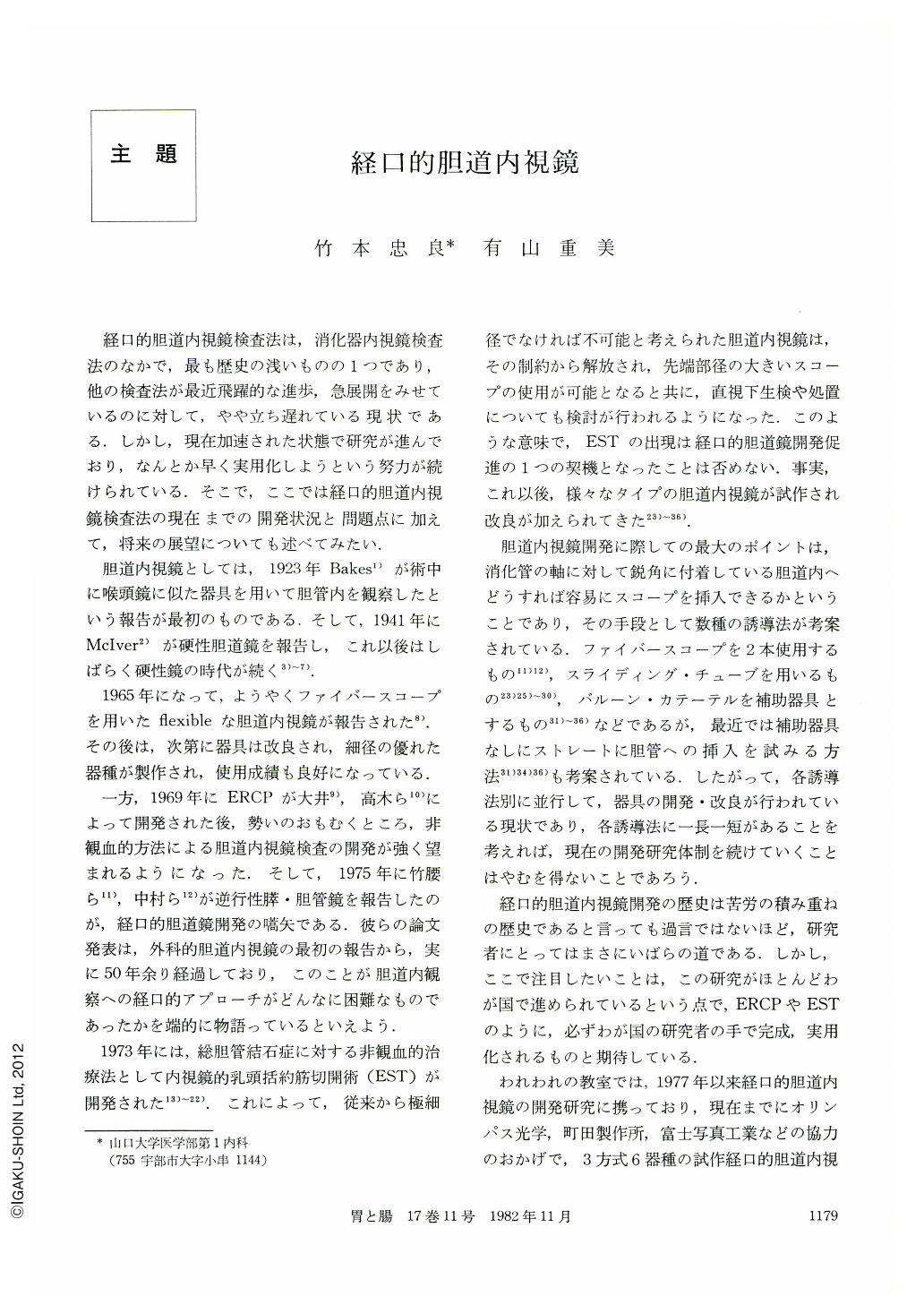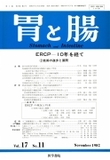Japanese
English
- 有料閲覧
- Abstract 文献概要
- 1ページ目 Look Inside
経口的胆道内視鏡検査法は,消化器内視鏡検査法のなかで,最も歴史の浅いものの1つであり,他の検査法が最近飛躍的な進歩,急展開をみせているのに対して,やや立ち遅れている現状である.しかし,現在加速された状態で研究が進んでおり,なんとか早く実用化しようという努力が続けられている.そこで,ここでは経口的胆道内視鏡検査法の現在までの開発状況と問題点に加えて,将来の展望についても述べてみたい.
胆道内視鏡としては,1923年Bakes1)が術中に喉頭鏡に似た器具を用いて胆管内を観察したという報告が最初のものである.そして,1941年にMcIver2)が硬性胆道鏡を報告し,これ以後はしばらく硬性鏡の時代が続く3)~7).
Peroral cholangioscopy is still in its foward on the way to the perfection in its procedure and many problems remain at present. Efforts for making it possible for practical use continues. Thus, details of development, clinical results, and the points at issue concerning peroral cholangioscopy are discussed here.
The instruments which are now being used are classified into three types according to inserting these procedures.
These are the “Mother&Baby” method, the “Sliding tube” method, and the “Direct” method. Each method has some assets and defects. Because it is difficult to standardize these procedures, the developments of each procedure are conducted on parallel lines.
Areas necessary for development for peroral cholangioscopy are easy-insertion into the bile duct, deep insertion, improvement of therapeutic and photographic ability, and shortening of examination time.
In the future, we look foward to treatments for intrahepatic gallstone, diagnosis with early cancer of the biliary tract, and introduction of the laser technology for the diagnosis and therapy.

Copyright © 1982, Igaku-Shoin Ltd. All rights reserved.


